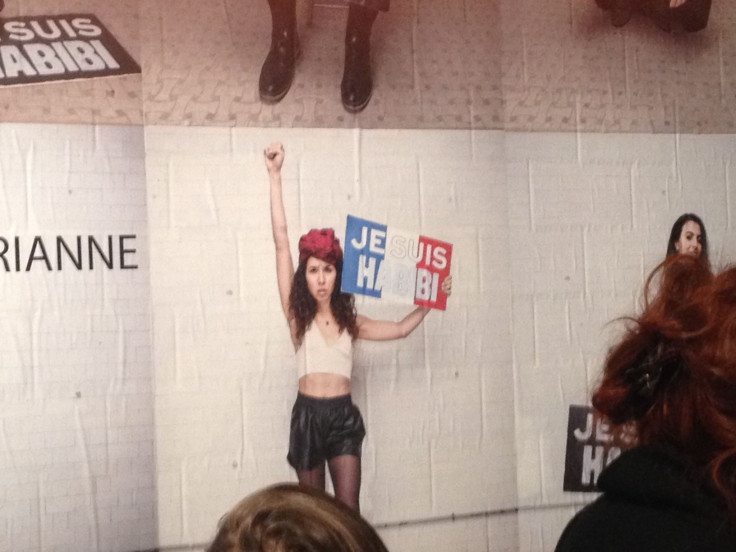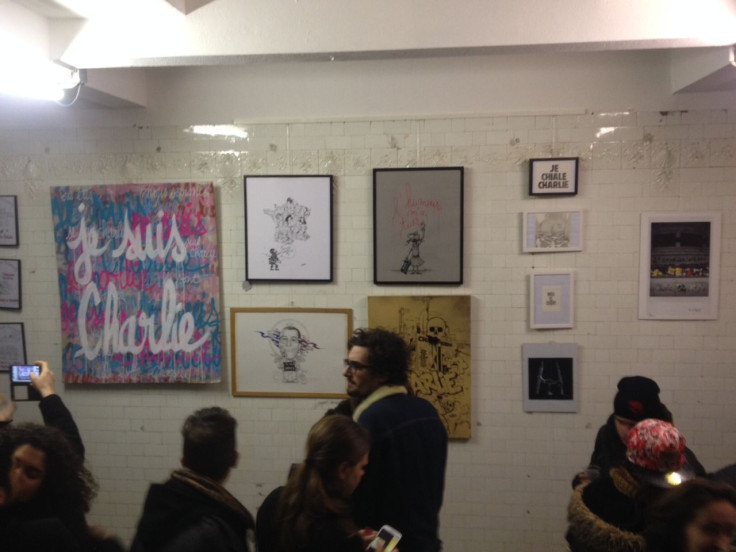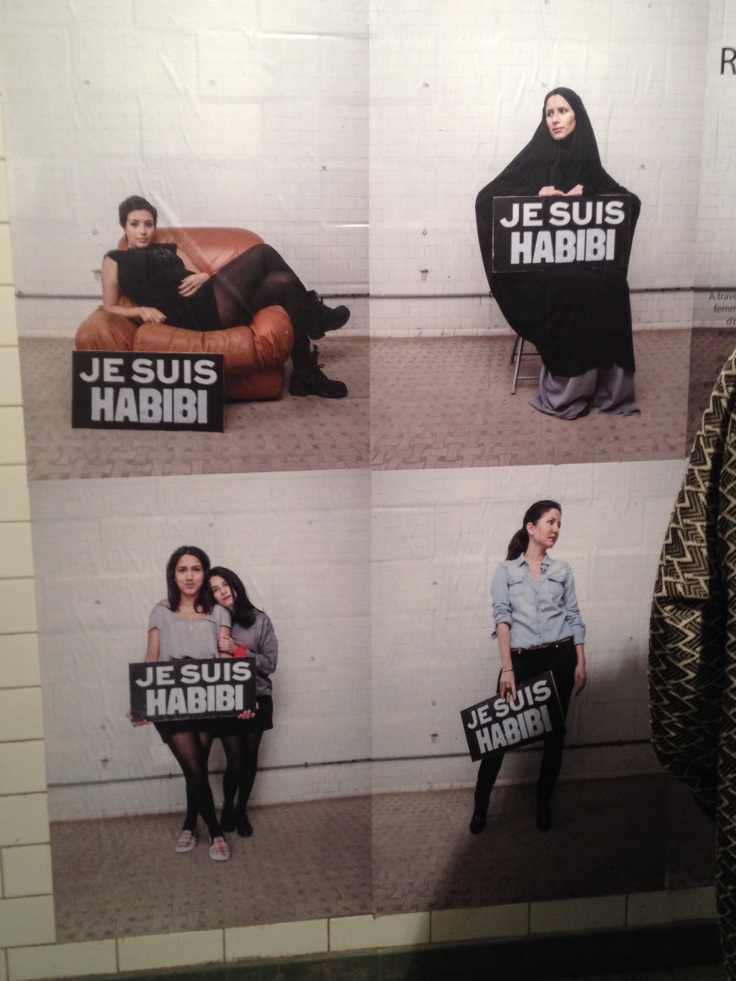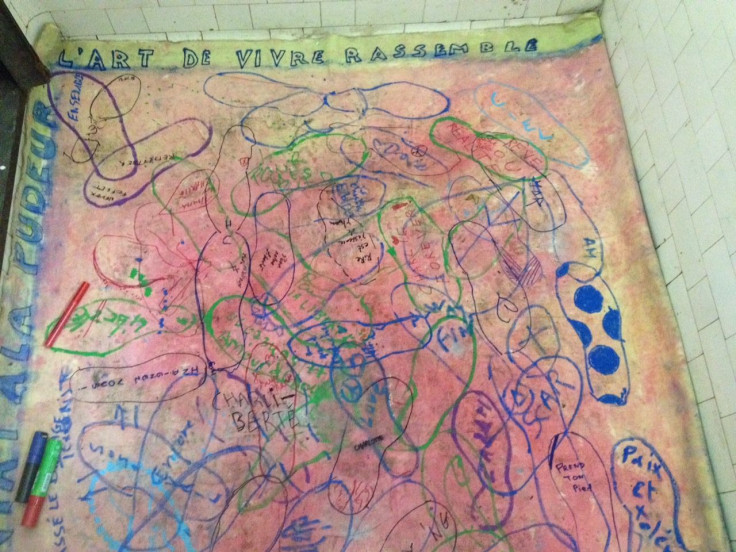After Charlie Hebdo, No Place For Racism Or Oppression In Paris Underground Art Scene

PARIS -- Dozens of young Parisians stood smoking cigarettes and drinking out of plastic cups near what looked like a large hole in the sidewalk. They were waiting to go down a spiral staircase into Galerie 28bis, an exhibition organized by the city's underground art scene Thursday night in response to last week's deadly attacks on Charlie Hebdo and a kosher market.
After descending the staircase and entering a space lit only by candles, the attendees entered a narrow tunnel that used to be a public restroom but is now an art exhibit. Nearly every inch of white ceramic tile on the wall and every doorless bathroom stall featured colorful responses to what some are calling France's 9/11. The exhibits ranged from graffiti to slideshows.
The Paris terror attacks, which left 17 victims dead, has extracted a toll on all of France, but it has been particularly painful for Parisian artists whose livelihood -- like the livelihoods of the cartoonists killed because their craft -- depends on the freedom to create.
“Creating is an act of resistance,” Hedi Man, an art agent with ArtLabz and one of the event’s organizers, said. “The way we handle being confronted with these events is to have a creation.”

Organizers called for submissions on Facebook and through artist communities around Paris just five days before the exhibition's preview, and the response from both artists and attendees was overwhelming. Every submission was on display.
One area of the exhibition had a slideshow showing pictures from Sunday’s march in Paris that drew roughly 3 million people defending their right to freedom of expression. Another section of the exhibition featured photos from artist Maya-Ines Touam, whose work often focuses on representations of the modern Muslim woman in various countries. For Galerie 28bis, she photographed different women from Paris’ Muslim community holding up signs that said "Je Suis Habibi." Habibi is an Arabic term of endearment that means "my love."

One particularly powerful piece showed a woman wearing a burqa holding a Je Suis Habibi sign next to a photo of another woman wearing shorts and a crop top holding a Je Suis Habibi sign in the colors of the French flag.
Graffiti artist and painter Sara Chelou said she wanted to personally honor the cartoonists who died at Charlie Hebdo.
“In the world of graffiti actually there are a lot of Muslims, and I got the impression that everyone has made an effort to stay friends,” Chelou said. “They don’t want to get involved in it, even if they have different ideas.”

In the last stall, artist Marcel Aurange stood next to his piece, entitled “L’art De Vivre Rassembler” (The Art of Living Together) and invited attendees to trace their foot on his canvas.
“This [is] art instead of tyranny, art that brings people together,” Aurange said. “This is an oeuvre [work] that brings people together. It allows people to leave their trace, to walk on the canvas. It’s like the road that keeps the memories of our journey.”
After the exhibition, Aurange plans to find connections between the traced footsteps and turn it into a mosaic.
© Copyright IBTimes 2024. All rights reserved.






















